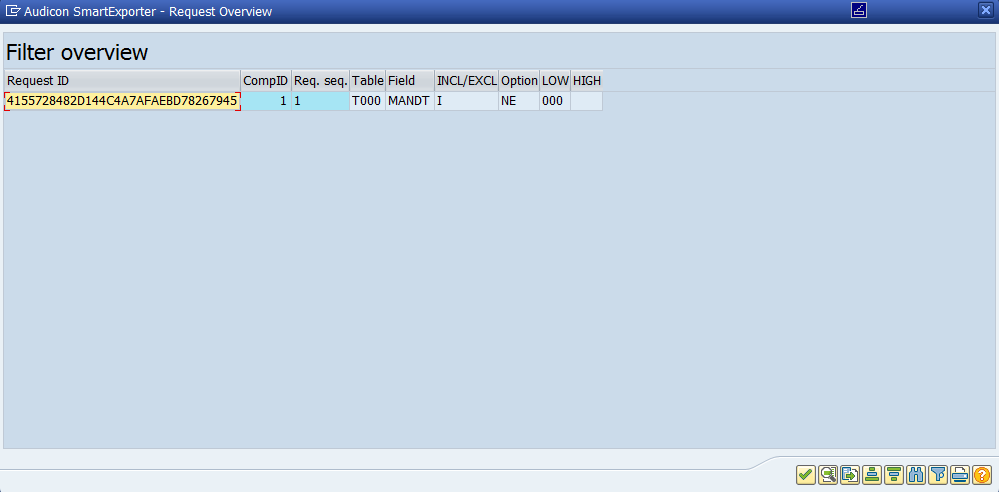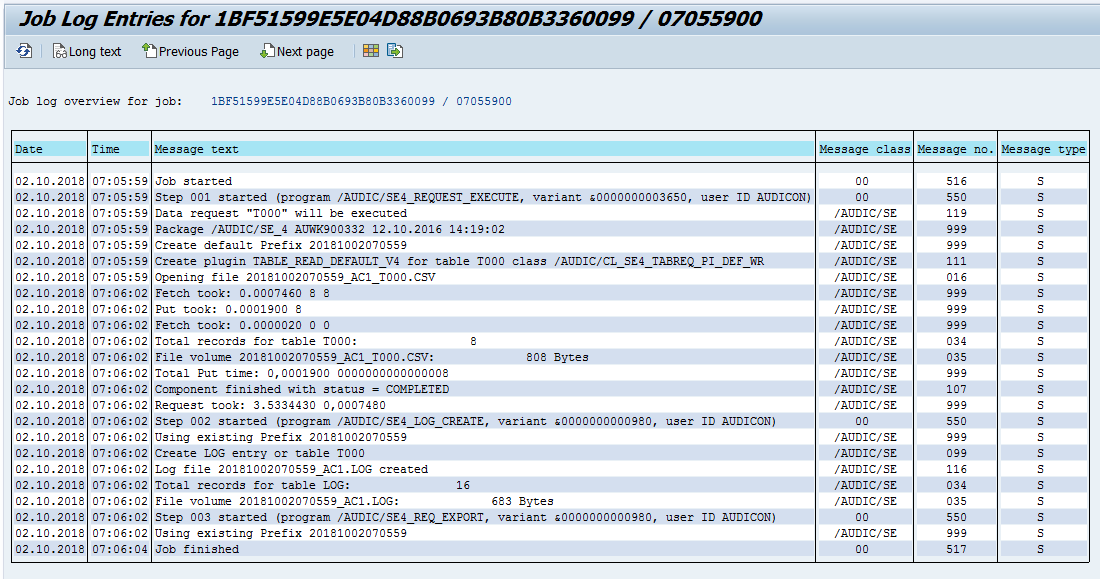Request overview
This function provides an overview of all requests.
You can call this function via the /AUDIC/SE_STATUS transaction.
The following selection screen is displayed:

Figure: Selection Screen of /AUDIC/SE_STATUS
The parameters have the following function:
| Selections | |
|---|---|
|
Request ID |
Request ID of the Data Request, matchcode search possible |
|
Requested by |
SmartExporter Windows client user who created the request |
|
SAP User |
User who initiated the request |
|
Created on |
Creation date of the request |
|
Time created |
Creation time of the request |
|
Comment |
Text, which was passed on along with the request |
|
Mode |
Mode in which the request was run S = synchronous A = asynchronous B = buffer table method C = count mode (table size) |
|
Maximum No. of Hits |
Maximum number of records to be displayed |
Table: Parameters of /AUDIC/SE_STATUS
The report list displays all logged Data Requests. For each Data Request further detail information is available, which you can display using the buttons in the record.
|
Param. |
Shows the parameters for the Data Request defined by SmartExporter. |
|
Config. |
Shows the SAP® Components settings which were valid when running the Data Request. |
|
Komp. |
Shows the requested tables/joins of the Data Request. |
|
Files |
Displays a list of the files generated during asynchronous Data Requests. |
|
Filters |
Displays a list of optional filter data of the Data Requests. |
|
Fields |
Displays a list of the requested table fields of the Data Request. |
|
Joins |
The list displays information referring to the tables used in the joins. |
|
Join cond. |
The list displays the join conditions for the join of tables. |
|
Auth. Flt. |
Shows the authorization filters which were added when the Data Request was run. |
|
DP fields |
The list displays all table fields which were anonymized or encrypted when the Data Request was run. For each table field the method used and the parameters entered are displayed. |
|
Strg.loc. |
This list shows the storage locations for output files and temporary files of asynchronous Data Requests. |
|
Errors |
If errors occurred while the Data Request was run, they will be listed here. |
|
TemSe Object name |
The list displays the joblog of the background job generating the files during an asynchronous Data Request. The log of this job can be displayed by selecting a button in the "TemSe Object name" column. |

Figure: Status of all selected Data Requests
Click the buttons in the Data Request list to show more details of the corresponding Data Request.

Figure: Components Overview

Figure: File overview

Figure: Filter overview

Figure: Job log
Using the buttons you can run the standard functions for the ALV lists. In addition, you can click the Refresh icon to refresh the list and you can use the Delete request data icon to delete the files and buffer table entries and the Delete status data icon to remove the entries for a specific request from the overview.
To run the Delete request data and Delete status data functions you have to select the line and click the corresponding button. In the corresponding security prompt click Yes.
Important note:
To decrypt data that was encrypted using the /AUDIC/SE_DPRV transaction you need the corresponding Request ID. This is the Request ID that was generated during the extraction of the encrypted data.
If you use the “Delete status data” function, also the corresponding Request IDs will be deleted. Once the Request IDs are deleted, the corresponding encrypted data cannot be decrypted anymore.